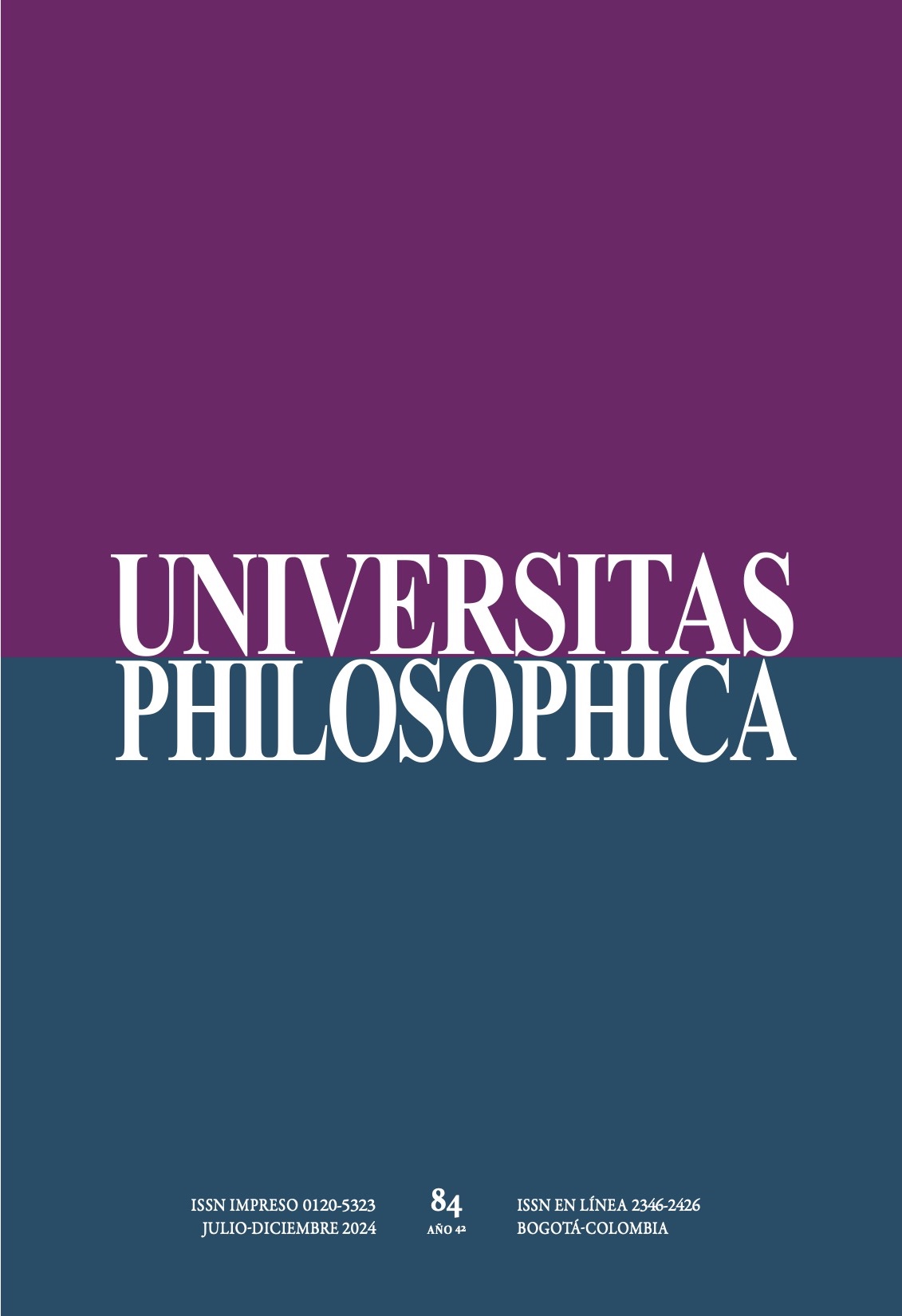Abstract
Astrobiology is a new branch of science whose main focus is the study of possible life forms that are not found on Earth. Being an interdisciplinary field, it is open to contributions from other areas of knowledge, such as philosophy. This research is a proposal for categorizing possible non-terrestrial life forms from a philosophical standpoint, but focused on scientific data and considerations, while also taking into account that science does not have many verifiable elements that confirm the existence of living structures beyond Earth. However, we work with certain feasible ideas in order to theorize and reflect, by use of qualitative method and bibliographic technique, leaving space for the author’s own ideas. As a result, the study proposes seven classificatory sections: Instrumental abiological, Darwinian and non-Darwinian Microorganism, Instinctive macroorganism, Intellectual macroorganism, Conscious macroorganism, Genbiological, and Metabiological.
Abbagnano, N. (1993). Diccionario de filosofía. 10ª. reimpresión. Fondo de Cultura Económica.
Aristóteles (1978). Acerca del alma (T. Calvo Martínez, trad.). Gredos.
Aristóteles (1994). Metafísica (T. Calvo Martínez, trad.). Gredos.
Aristóteles (1995). Física (G. R. de Echandía, trad.). Gredos.
APA, American Psychological Association (2010). Diccionario Conciso de Psicología (S. Viveros Fuentes, ed.; J. R. Núñez Herrejón y M. E. Ortiz Salinas, trads.) Editorial El Manual Moderno.
Bergson, H. (2007). La evolución creadora (P. Ires, trad.). Cactus.
Brugger, W. (1969). Diccionario de filosofía (J. M. Vélez Cantarell, trad.). 6ª. ed. Herder.
Bunge, M. (2001). Diccionario de filosofía. 1ª. ed. Siglo XXI.
Capra, F. (2000). El Tao de la física (A. A. Martell Moreno, trad.). 3ª. ed. Sirio.
Cairns-Smith, A. G. (1985). Seven Clues to the Origin of Life: A Scientific Detective Story. Cambridge University Press,
Carr, B. (2021). Making space and time for consciousness in physics. En P. Dennison (ed.), Perspectives on Consciousness (pp. 319–350). Nova Science Publishers.
Chalmers, D. (1999). La mente consciente. En busca de una teoría fundamental (J. A. Álvarez, trad.). Gedisa.
Chamovitz, D. (2019). Lo que las plantas saben. Un estudio de los sentidos en el reino vegetal (G. Deza Guil, trad.). Ariel.
Churchland, P. (2012). El cerebro moral. Lo que la neurociencia nos cuenta sobre la moralidad (C. Font Paz, trad.). Paidós.
Dawkins, R. (1989). El gen egoísta. Las bases biológicas de nuestra conducta (J. Robles Suárez, trad.) Salvat.
Dick, S. (2006). The Postbiological Uuniverse. 57th International Astronautical Congress.
Diéguez, A. (2011). La evolución del conocimiento. De la mente animal a la mente humana. Biblioteca Nueva.
Grof, S. (1998). The Cosmic Game: Explorations of the Frontiers of Human Consciousness. State University of New York Press.
Gutiérrez Bonilla, F. P. (2010). Capítulo I. Introducción a la biología. En L. E. Beltrán, F. P. Gutiérrez y G. Rozo Torres (Coords. acad.) Biología: conceptos y fundamentos básicos (pp. 25-33). 2ª. ed. Fundación Universidad de Bogotá Jorge Tadeo Lozano.
Hirschberger, J. (1968). Hitos en el mundo del pensamiento. Historia de la filosofía. (L. Martínez Gómez, trad.). Herder.
Jackson, F. (1986). What Mary didn’t know. The Journal of Philosophy, 83(5), 291-295. https://doi.org/10.2307/2026143
Jonas, H. (2000). El principio de vida. Hacia una biología filosófica (J. Mardomingo, trad.). Trotta.
Kuhn, T. (2004). La estructura de las revoluciones científicas (C. Solís Santos, trad.). Fondo de Cultura Económica.
Lawrence, E. (ed.). (2003). Diccionario Akal de Términos Biológicos (R. Codes Valcarce y F. J. Espino Nuño, trads.). Akal.
Low, P. (2012). The Cambridge Declaration on Consciousness. Proceedings of the Francis Crick Memorial Conference, Churchill College, Cambridge University, July 7 2012, pp. 1-2.
Maturana, H. R. (1972). Biology of Cognition. En H. R. Maturana y F. J. Varela, Autopoiesis and Cognition. The Realization of the Living (R. S. Cohen y M. X. Wartovsky, eds.) (pp. 2-58). D. Reidel Publishing Company.
Maturana, H. R., & Varela, F. (1994). De máquinas y seres vivos. Autopiesis: la organización de lo vivo. Lumen.
Nagel, T. (1974). What is Like to Be a Bat? The Philosophical Review, 83(4), 435-450. https://doi.org/10.2307/2183914
Nagel, T. (1998). Una visión de ningún lugar. Fondo de Cultura Económica.
National Research Council of the National Academies. (2007). The Limits of Organic Life in Planetary Systems. The National Academies Press. https://doi.org/10.17226/11919.
Ortega y Gasset, J. (1965). Meditación de la técnica. Espasa Calpe.
Nietzsche, F. (2013). Crepúsculo de los ídolos (A. Sánchez Pascual, trad.). Alianza editorial.
Pigliucci, M. (2009). An Extended Synthesis for Evolutionary Biology. Annals of the New York Academy of Sciences, 1168(1), 218-228. https://doi.org/10.1111/j.1749-6632.2009.04578.x
Shapiro, R. (1994). Orígenes. Lo que sabemos actualmente sobre el origen de la vida (M. Crespo, trad.). Salvat.
Singer, P. (1995). Ética práctica. 2ª. ed. Cambridge University Press.
Spinoza, B. (2000). Ética demostrada según el orden geométrico (A. Domínguez, trad.). Trotta.
Tegmark, M. (2014). Nuestro universo matemático. En busca de la naturaleza última de la realidad (D. Otero-Piñeiro, trad.). Antoni Bosch Editor.
Tinbergen, N.. (1951). The Study of Instinct. Oxford University Press.
Thompson, E. (2010). Mind in Life: Biology, Phenomenology, and the Sciences of Mind. Harvard University Press.
Wittgenstein, L. (2009). Investigaciones filosóficas. En Tractatus Logico-Philosophicus. Investigaciones filosóficas. Sobre la certeza (A. García Suárez y C. U. Moulines, trads.) (pp. 155-633). Gredos.

This work is licensed under a Creative Commons Attribution 4.0 International License.
Copyright (c) 2025 Daniel Cabrera



